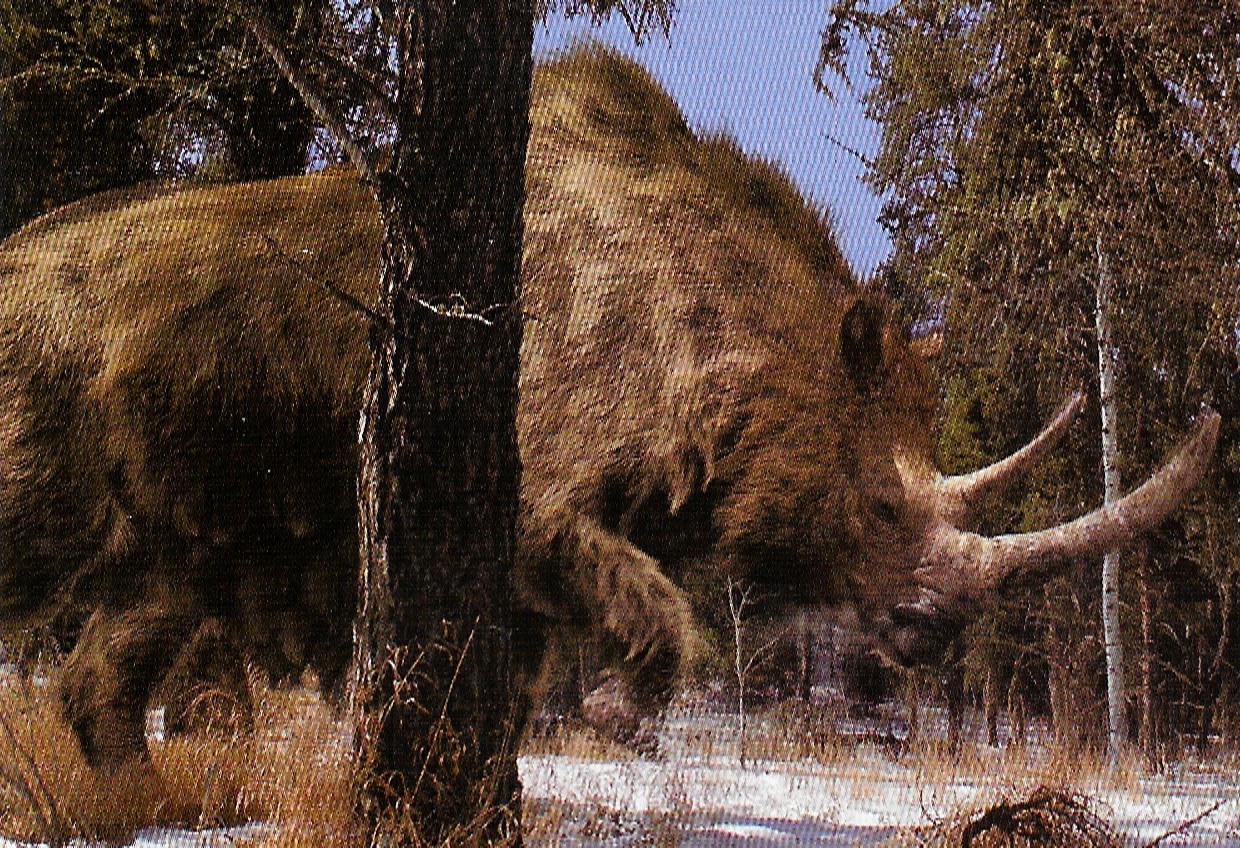
The woolly rhinoceros co-existed with mammoths and several other extinct larger mammals of the Pleistocene megafauna. Its geographical range expanded and contracted with the alternating cold and warm cycles, forcing populations to migrate as glaciers receded. Woolly rhinoceros is the common name for an extinct, plant-eating species of rhinoceros, Coelodonta antiquitatis, that lived in Europe and Asia from about. During the last Ice Age the impressive animal roamed much of Northern Europe and was common in the cold, arid desert which are southern England and the North Sea today. The woolly rhinoceros used its horns for defensive purposes and to attract mates. It had thick, long fur, small ears, short, thick legs, and a stocky body. Two horns on the skull were made of keratin (which doesn’t survive in the fossil record), the anterior horn being 61 cm (24 in) in length, with a smaller horn between its eyes. The woolly rhinoceros could grow to be 2 m (6.6 ft) tall. An adult woolly rhinoceros was typically around 3 to 3.8 metres (10 to 12.5 feet) in length, with an estimated weight of around 2,721–3,175 kg (5,999–7,000 lb). It is dangerous when cornered or surprised, and will gore any hunter that gets too close with its sharp horns. The woolly rhinoceros is the fourth animal available to hunt. The external appearance of woolly rhinos is known from mummified individuals from Siberia as well as cave paintings. The woolly rhinoceros (also spelled as wooly rhinoceros (notably in Carnivores Ice Age), and often shortened to woolly rhino or just rhino) is the largest rhinoceros in Europe similar to the living modern-day rhinoceros. Stocky limbs and thick woolly pelage made it well suited to the steppe-tundra environment prevalent across the Palearctic ecozone during the Pleistocene glaciations. They weighed up to 6,000 pounds (2,721 kg) and were about 12.5 feet (3.8 m) long.



This is taller than most humans and about the size of the modern white rhinoceros. Woolly rhinos stood about 6.5 feet (1.98 m) high at the shoulder. As the last and most evolved member of the Pleistocene rhinoceros lineage, the woolly rhinoceros was supremely well adapted to its environment. It had a long, thick coat of fur to help it stay warm in a freezing climate.


 0 kommentar(er)
0 kommentar(er)
